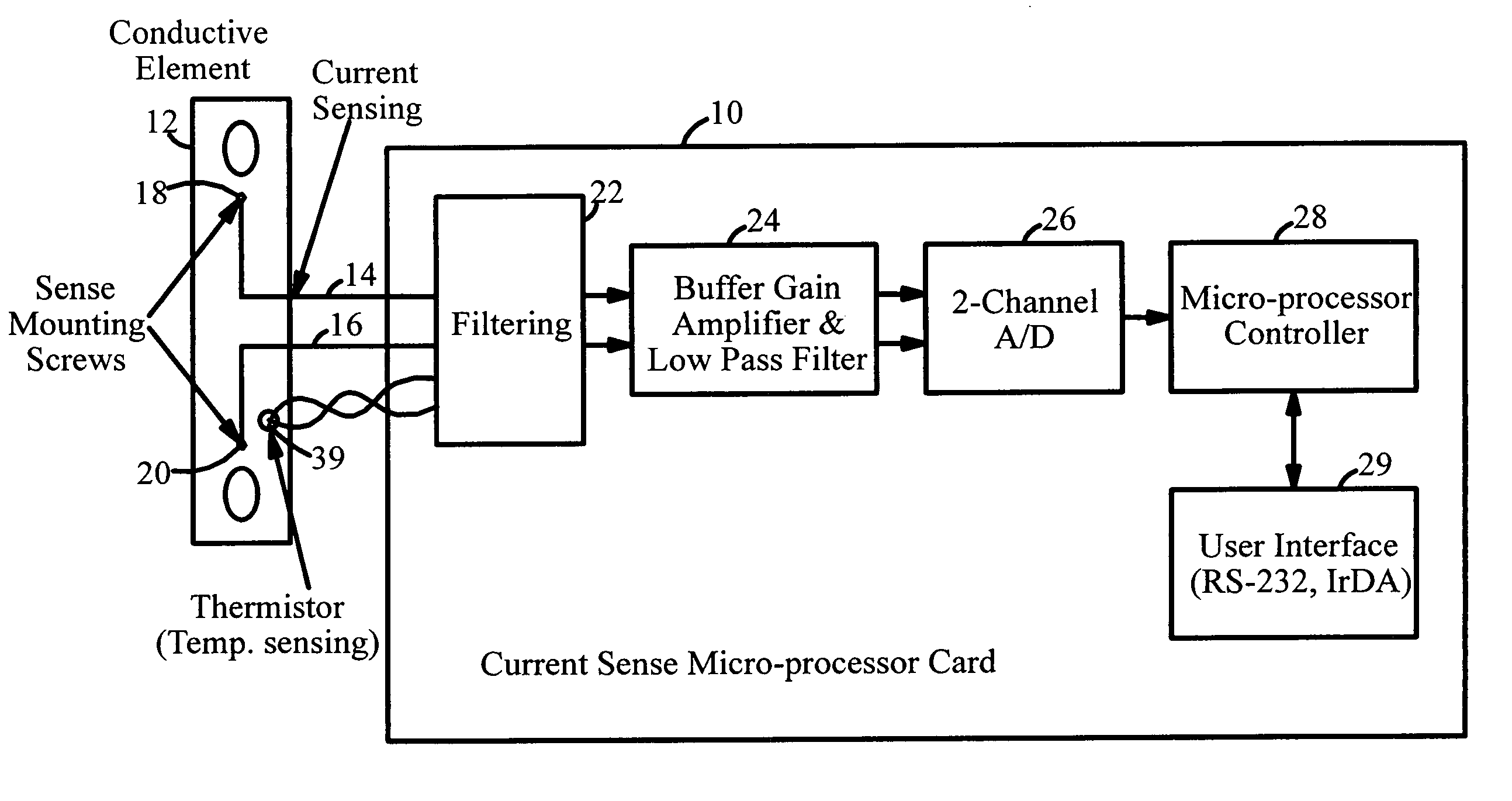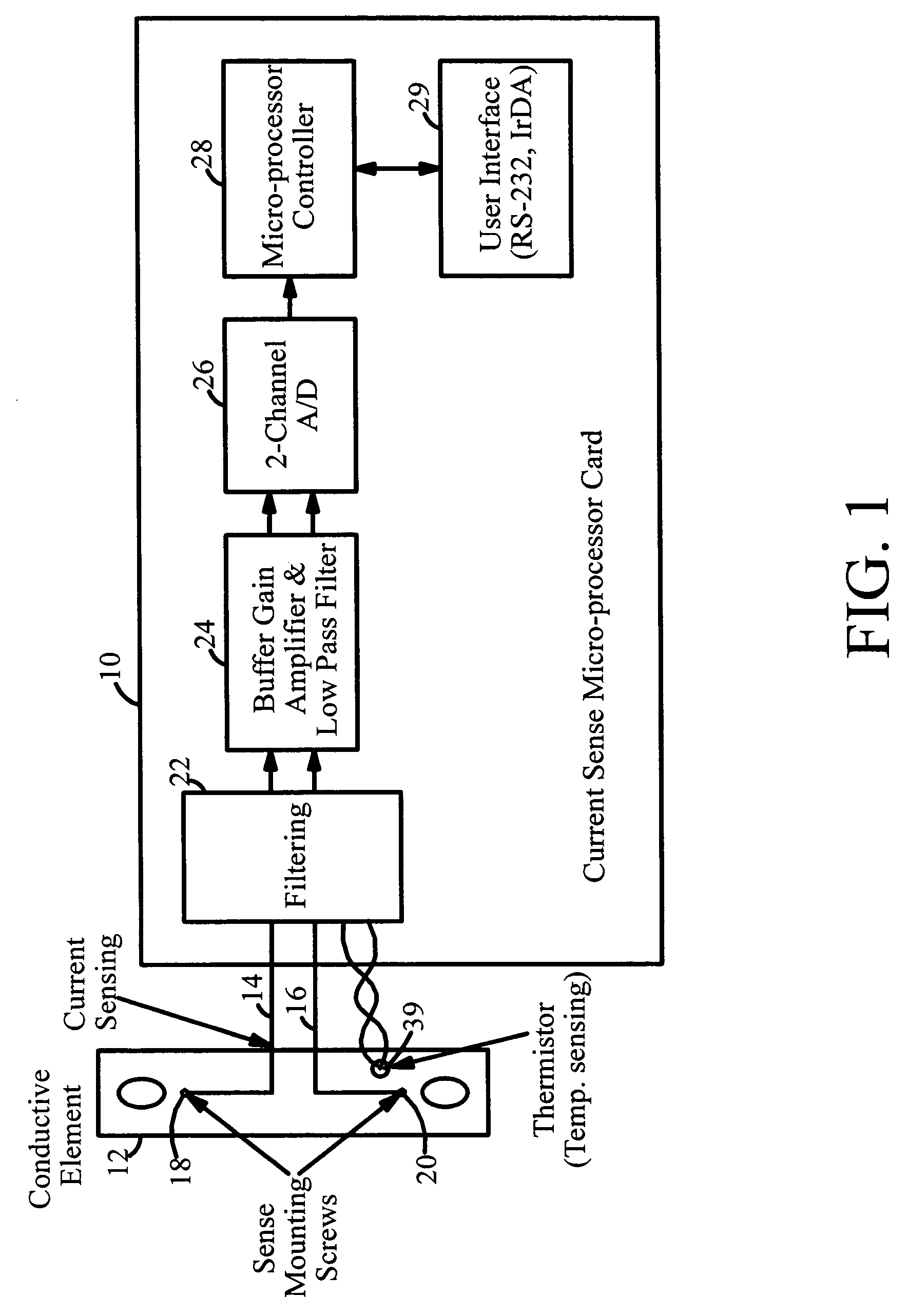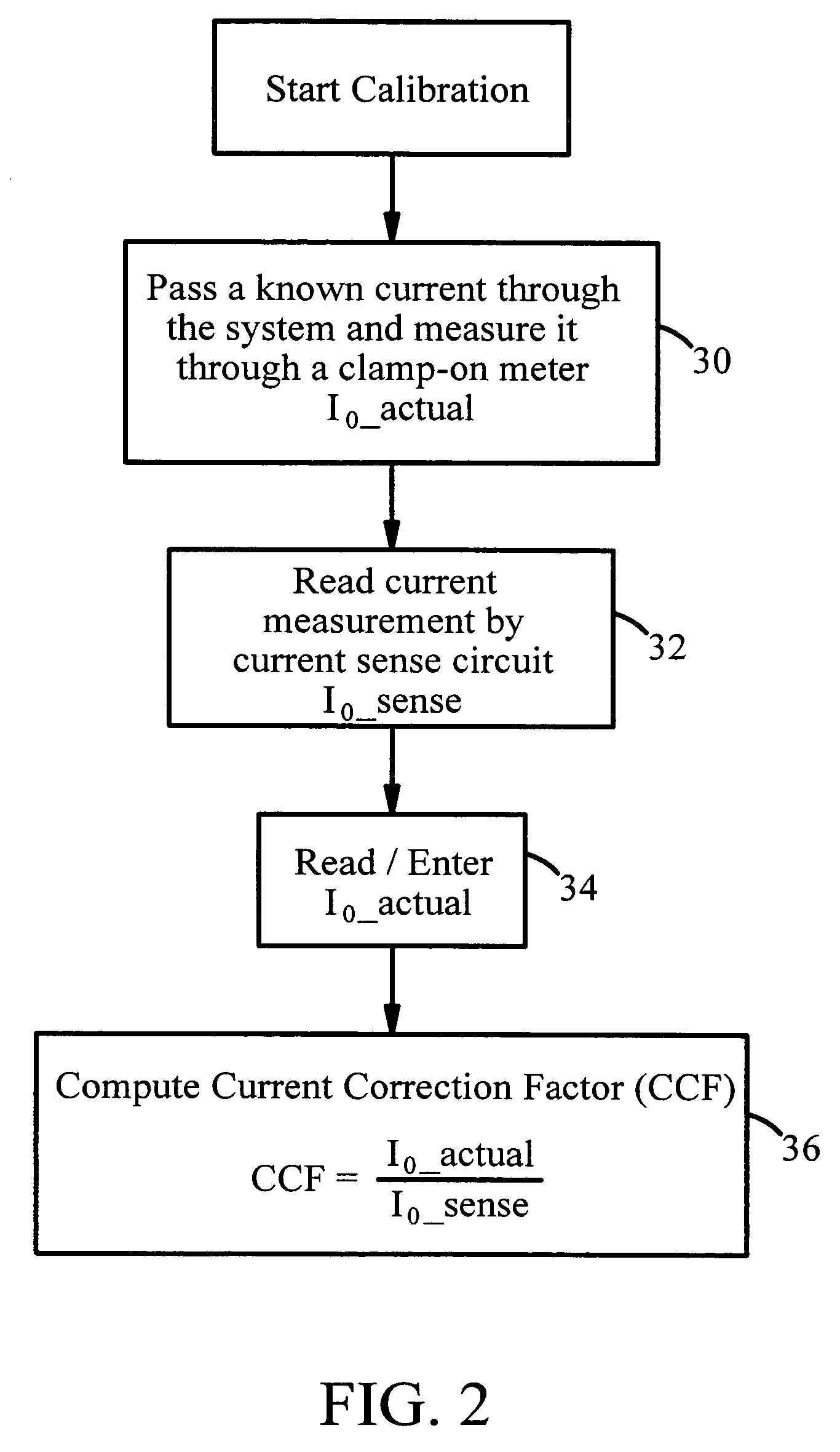Activity-based battery monitor with a universal current measuring apparatus
a technology of current measurement and battery monitor, which is applied in the direction of instruments, base element modifications, material analysis, etc., can solve the problems of resistance to change, inability to easily remove intercell connectors, and welded intercell connectors on battery posts, etc., and achieve the effect of minimal labor
- Summary
- Abstract
- Description
- Claims
- Application Information
AI Technical Summary
Benefits of technology
Problems solved by technology
Method used
Image
Examples
Embodiment Construction
[0021]FIG. 1 illustrates a universal current measuring apparatus 10 that measures the current of any conductive element link. The apparatus 10 is connected to a conductive element 12 by two wires 14 and 16. The two wires 14 and 16 are attached across the conductive element link using self-tapping screws 18 and 20. The screws 18 and 20 can be, for example, a distance of 2 to 3 inches apart.
[0022]The separation of the two wires 14 and 16 along the conductive element 12 results in a voltage drop which is proportional to the resistance in between the two sense leads. The distance between the sense leads can be adjusted to obtain an approximate target voltage drop (typically, a few millivolts) at a given current. For example, in a battery application, if an intercell connector is used to measure current, connecting the sense lead 2 inches apart across an intercell connector may yield a 50 mV voltage drop at 1000 A nominal current. Since the spacing may not be exact from one system to ano...
PUM
| Property | Measurement | Unit |
|---|---|---|
| distance | aaaaa | aaaaa |
| voltage drop | aaaaa | aaaaa |
| temperature | aaaaa | aaaaa |
Abstract
Description
Claims
Application Information
 Login to View More
Login to View More - R&D
- Intellectual Property
- Life Sciences
- Materials
- Tech Scout
- Unparalleled Data Quality
- Higher Quality Content
- 60% Fewer Hallucinations
Browse by: Latest US Patents, China's latest patents, Technical Efficacy Thesaurus, Application Domain, Technology Topic, Popular Technical Reports.
© 2025 PatSnap. All rights reserved.Legal|Privacy policy|Modern Slavery Act Transparency Statement|Sitemap|About US| Contact US: help@patsnap.com



